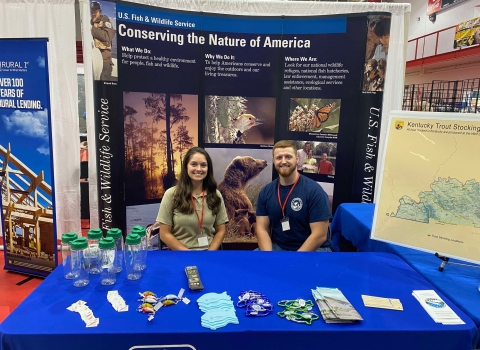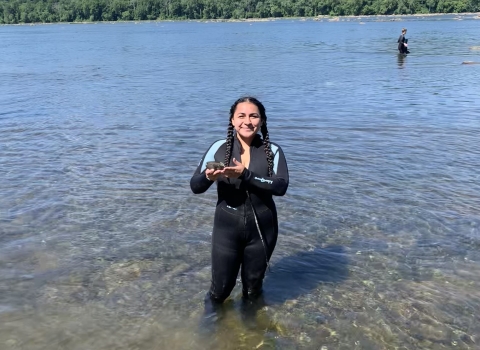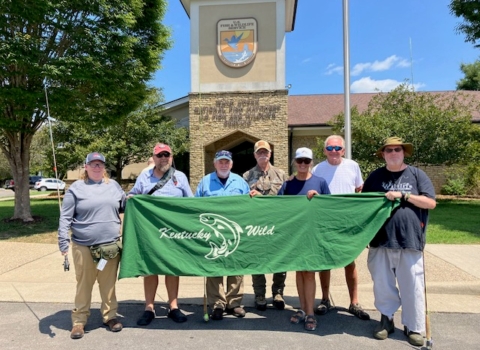What is the marron bacora and where does it occur?
Marron bacora is a flowering shrub native to the Virgin Islands. This rare, tropical plant is a member of the tomato family (Solanaceae) and can grow up to 15 feet tall under cultivation.
What action is the U.S. Fish and Wildlife Service taking?
The Service is finalizing a rule to list the marron bacora as an endangered species under the Endangered Species Act (ESA). The Service is also finalizing the designation of approximately 2,548 acres (ac) (1,031 hectares [ha]) as critical habitat for the species on the island of St. John.
Why is the U.S. Fish and Wildlife Service listing the marron bacora as an endangered species?
The marron bacora was originally described in 1813 from a specimen collected in the late 1700s. It was believed to have gone extinct until its rediscovery in 1992. Three of the populations discovered since the species rediscovery no longer exist and are considered as extirpated by local experts. There are only three remaining populations on the northern side of St. John and four towards the southeast side of the island. Of these seven existing populations on St. John, all but one occurs within the boundaries of the Virgin Islands National Park. In 2018, staff from the Royal Botanic Garden (Kew) in Tortola (British Virgin Islands) discovered marron bacora at Sabbat Hill on Tortola, extending the species’ range to this neighboring island.
Historical habitat destruction and modification have fragmented the distribution of populations, possibly contributing to a lack of genetic exchange between them. Another ongoing threat to all the occurrences of marron bacora is the lack of natural recruitment, most likely due to predation (consumption) of its fruits and seedlings by non-native feral animals such as white-tailed deer, goats, pigs, and donkeys along with habitat intrusion by exotic invasive plants (e.g., guinea grass).
What is critical habitat?
Critical habitat is a term defined and used in the ESA. It is specific geographic areas that contain features essential to the conservation of an endangered or threatened species that may require special management and protection. Critical habitat may also include areas that are not currently occupied by the species but will be needed for its recovery.
Under the ESA, federal agencies must ensure that any action they authorize, fund, or carry out is not likely to result in the destruction or adverse modification of critical habitat. The designation of critical habitat on private land has no impact on individual landowner activities unless they also involve activities by a federal agency or require federal funding or permits. Critical habitat designation does not affect landownership or establish a wildlife refuge, preserve or other conservation area conservation area
A conservation area or wildlife management area is a type of national wildlife refuge that consists primarily or entirely of conservation easements on private lands. These conservation easements support private landowner efforts to protect important habitat for fish and wildlife. There are 15 conservation areas and nine wildlife management areas in the National Wildlife Refuge System.
Learn more about conservation area , nor does it allow the government or public access to private lands.
How does the Service determine what areas to designate as critical habitat?
Within areas occupied by the species, biologists consider physical or biological features needed for life processes. Biologists also consider unoccupied areas that are essential for the conservation of the species. These include:
space for individual and population growth and for normal behavior;
cover or shelter;
food, water, air, light, minerals, or other nutritional or physiological requirements;
sites for breeding and rearing offspring; and
habitats that are protected from disturbances or are representative of the historical geographical and ecological distributions of a species.
What is the final critical habitat designation for marron bacora?
When a species is listed under the ESA, the Service is required, where possible, to identify areas essential to the conservation of that species, known as critical habitat. The Service carefully evaluated the life-history processes of marron bacora and ensured that areas proposed for critical habitat were occupied by the species and contained the physical or biological features needed to support its’ biological needs. The Service is finalizing the designation of approximately 2,548 ac (1,031 ha) of critical habitat for the species. All acreage being designated is currently occupied by the plant and most of it occurs in Virgin Islands National Park. Only 70 acres ac (28 ha) of designated critical habitat are within private ownership.
Based on information received during the comment period when the species was proposed for listing in August 2020, there was an amendment to the proposed critical habitat designation to exclude 1.33 acres ac (0.54 ha), changing the total critical habitat acreage from 2,550 ac to the current 2,548 ac.
Final critical habitat for marron bacora on the island of St. John, U.S. Virgin Islands.
How can the public view information that was used in preparing the final rule listing the marron bacora as an endangered species?
The rule finalizing the marron bacora’s listing as an endangered species and designating critical habitat becomes effective on July 18, 2022. The rule, comments, and materials the Service received, as well as supporting documentation used in preparing the rule, are available for public inspection at http://www.regulations.gov; search for Docket No. FWS–R4–ES–2019-0050. Persons who use a telecommunications device for the deaf (TDD) may call the Federal Relay Service at (800) 877–8339.
FOR FURTHER INFORMATION CONTACT: Edwin Muñiz, Field Supervisor, U.S. Fish and Wildlife Service, Caribbean Ecological Services Field Office, P.O. Box 491, Road 301 Km 5.1, Boquerón, PR 00622; telephone 786-244-0081. E-mail: caribbean_es@fws.gov



